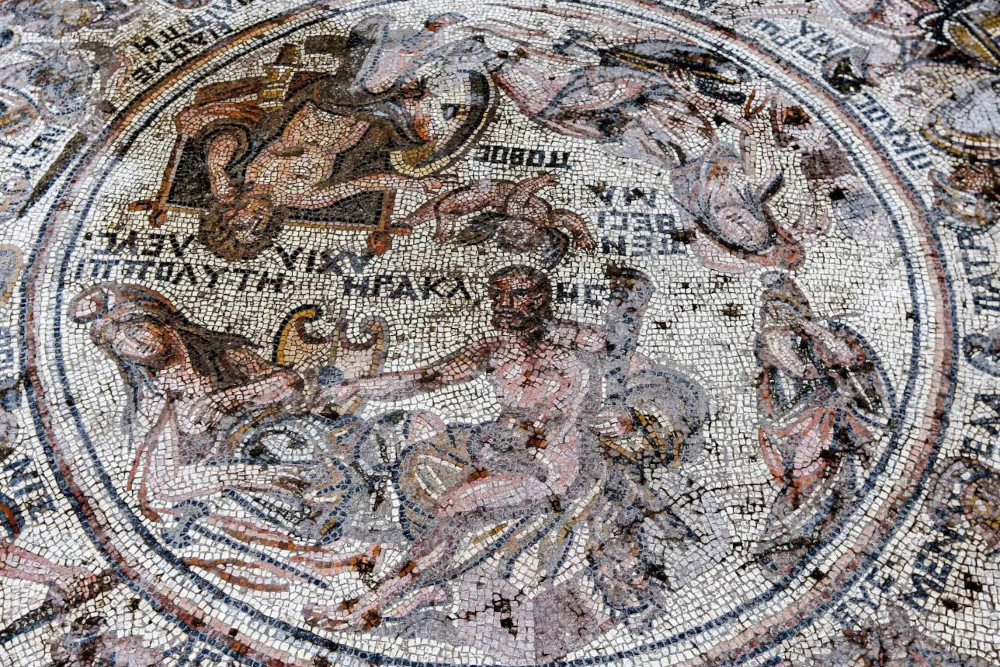History & Heritage
10.19.2022
Roman mosaic of The Trojan War reappears in Syrian ruins

A magnificent 1600-year-old Roman mosaic has been discovered in a Syrian town, virtually intact.
In the Syrian city of Al-Rastan, in the province of Homs, a team of archaeologists has uncovered a magnificent mosaic from the Roman era depicting the Trojan War, the sea god Neptune, accompanied by 40 of his mistresses, and the demigod Hercules killing the Amazon queen Hippolyta. According to archaeologists, this is the first significant discovery in the region since the start of the long Syrian civil war in 2011.
A rare find on a global scale
The mosaic, which measures about 1,300 square feet, or 20 by 6 metres, is inlaid with coloured tiles, which Humam Saad, the associate director in charge of the excavation, described as “rich in detail”. “What we are seeing is a rare find on a global scale,” Saad told the Associated Press. “As we have not yet completed the excavation, we are not yet able to identify whether the mosaic was part of a public bath or another building.”
Voir cette publication sur Instagram
Despite Rastan’s historical significance as an ancient city dating back some 4,000 years, the area witnessed some of the worst conflict during the Syrian civil war, when it was used as a rebel stronghold before Syrian government forces retook it in 2018. “Unfortunately, at some point in 2017, some armed groups tried to sell the mosaic and put it up for sale on social media platforms,” Saad lamented.
popular

